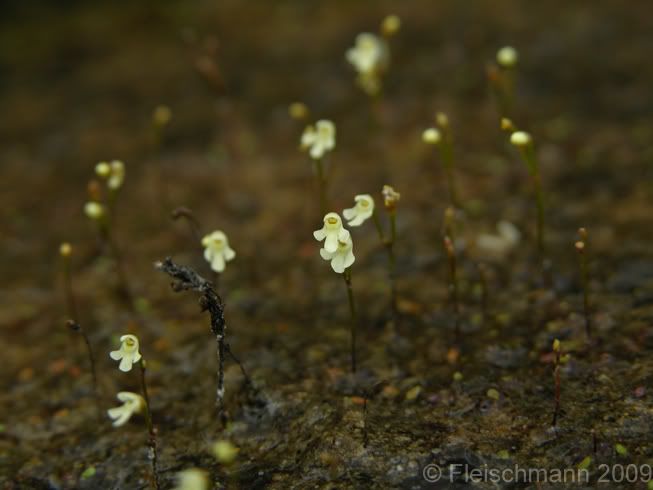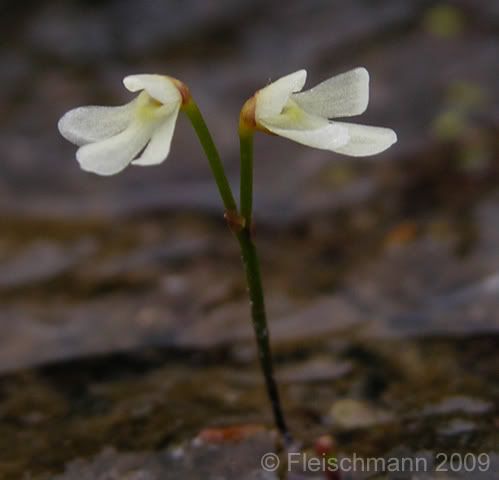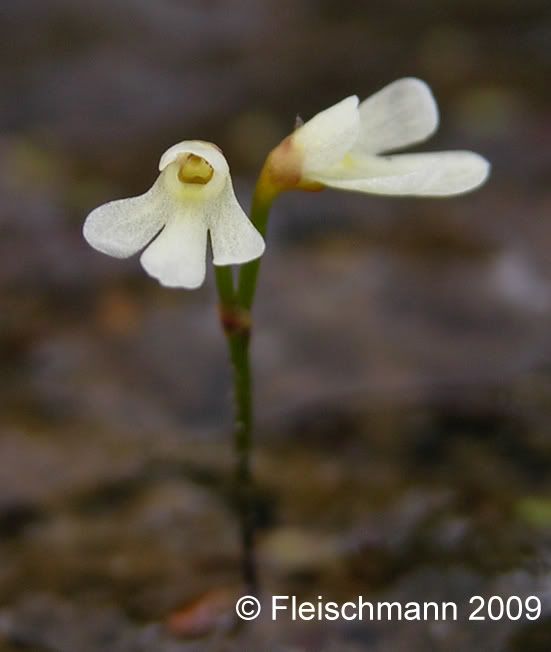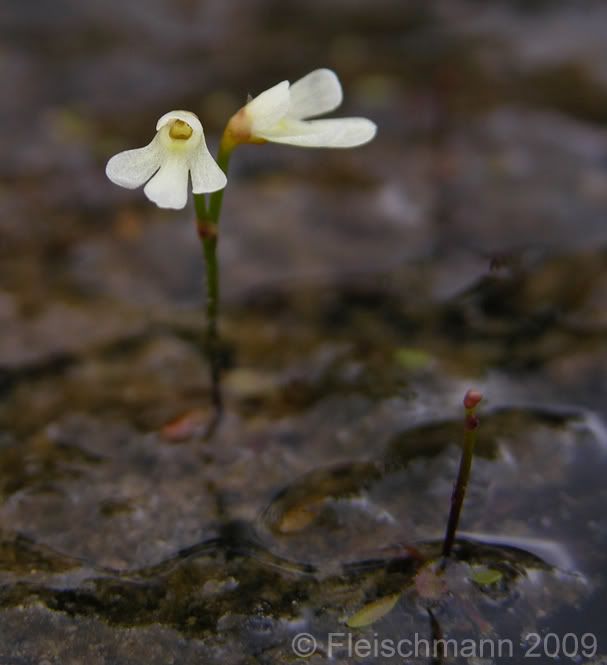Post by andreasfleischmann on Feb 20, 2009 18:55:42 GMT
Dear Utricularia-fans,
As a first topic in the South America part of this forum ( ), I’d like to introduce to you a fascinating rheo-lithophytic Utricularia species from Venezuela (i.e. a Utricularia which grows in seeping water attached to bare rock).
), I’d like to introduce to you a fascinating rheo-lithophytic Utricularia species from Venezuela (i.e. a Utricularia which grows in seeping water attached to bare rock).

The margins of the above river did host Utricularia oliveriana, a lowland species endemic to rivers of the Guayana shield. This is the “little sister” of the well-known rheo-lithophyte U. neottioides, which is much more widespread than the rare U. oliveriana.


Like in U. neottioides, the flowers of U. oliveriana are cream white, scented and the palate is reduced to a narrow rim, so that the corolla is permanently open (not a snap-dragon-type flower like in many other Utricularias).



In contrast to U. neottioides, which has segmented thin leaves like many aquatics, U. oliveriana has entire petiolate leaves, reminiscent of the leaves of many terrestrial Utricularia species.


Whereas U. neottioides can be found growing attached to deep riverbeds and even rocks in waterfalls (see threads and beautiful photos in this forum by our Brazilian friends!), its smaller sister U. oliveriana prefers to grow at the margins of rivers, attached to stones and rocks that are only covered by a thin film of water.

Note the vigorous red stolons, with which the plant attaches itself to the bare rock. Sorry for the bad quality of that photo, but it was hard to get some decent takes without any reflection of the water surface.
The nasty puri-puri sandflies which kept flying into my nose, eyes and ears, and which cause itchy bites when sucking your blood, did not make the job easier to get some nice photos of the lowland species of the Gran Sabana .
.
As a first topic in the South America part of this forum (
 ), I’d like to introduce to you a fascinating rheo-lithophytic Utricularia species from Venezuela (i.e. a Utricularia which grows in seeping water attached to bare rock).
), I’d like to introduce to you a fascinating rheo-lithophytic Utricularia species from Venezuela (i.e. a Utricularia which grows in seeping water attached to bare rock). 
The margins of the above river did host Utricularia oliveriana, a lowland species endemic to rivers of the Guayana shield. This is the “little sister” of the well-known rheo-lithophyte U. neottioides, which is much more widespread than the rare U. oliveriana.


Like in U. neottioides, the flowers of U. oliveriana are cream white, scented and the palate is reduced to a narrow rim, so that the corolla is permanently open (not a snap-dragon-type flower like in many other Utricularias).



In contrast to U. neottioides, which has segmented thin leaves like many aquatics, U. oliveriana has entire petiolate leaves, reminiscent of the leaves of many terrestrial Utricularia species.


Whereas U. neottioides can be found growing attached to deep riverbeds and even rocks in waterfalls (see threads and beautiful photos in this forum by our Brazilian friends!), its smaller sister U. oliveriana prefers to grow at the margins of rivers, attached to stones and rocks that are only covered by a thin film of water.

Note the vigorous red stolons, with which the plant attaches itself to the bare rock. Sorry for the bad quality of that photo, but it was hard to get some decent takes without any reflection of the water surface.
The nasty puri-puri sandflies which kept flying into my nose, eyes and ears, and which cause itchy bites when sucking your blood, did not make the job easier to get some nice photos of the lowland species of the Gran Sabana
 .
.





